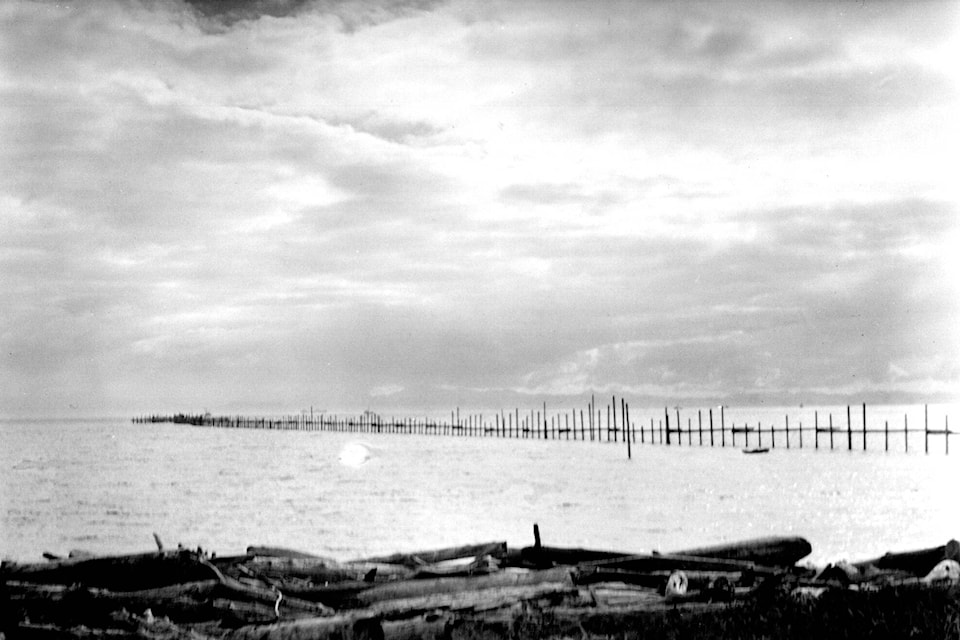Elida Peers | Contributed
Lining West Coast Road in the area facing access to the harbour, vehicles and boat trailers are congregated nowadays in their quest to hook into spring salmon. It seems like today sports fishing dominates the salmon fishing scene, a marked contrast to the early 20th-century era when the fishtraps industry was the major employer in Sooke.
Back in the 1950s, the Gordon Trap extended for half a mile when it was one of several enormous commercial fish trapping installations driven into the seabed each year between 1904 and 1958.
J.H. Todd initiated the fishtraps operations in B.C. in 1904, an industry which was to provide a living for a substantial number of Sooke families for several decades. The principle of the process was to intercept salmon as they made their way from the Pacific Ocean and Bering Sea back to their birth rivers after their ocean sojourn.
Todd scouted the coastline by vessel and set the industry in motion but was soon followed by several other trap enterprises as well. It narrowed down to J.H. Todd & Sons, who headquartered in Sooke Harbour. By 1922, they had amalgamated with a group from Port Townsend, Wash. and expanded a significant waterfront base at the foot of Maple Avenue alongside the government wharf called Sooke Harbour Fishing & Packing Company.
Visitors to town today who stop to view the waterfront see commercial enterprises, condo housing, and a series of fingers mooring fishing vessels. This relatively quiet scene contrasted with the bustling half-century when crews were operating piledrivers, dipping webbing into vats of tar to line the fir pilings such as those in the photo, running fishpackers and tenders. On Maple Avenue, where Brian Butler runs his office today, used to be a busy cookhouse that served hot meals to the crews.
Independent commercial fishermen dominated the scene for the next half century after the Second World War, but today that fraternity is vastly reduced, and it’s the sports fishermen and charter boat operators who hold sway now.
An entire industry has developed along our coast to Port Renfrew and beyond to support the lure of spring salmon, attracting people from all over the world to our coastal waters.
•••
Elida Peers is the historian of the Sooke Region Museum. Email historian@sookeregionmuseum.com.
editor@sookenewsmirror.com
Like us on Facebook and follow us on Twitter
